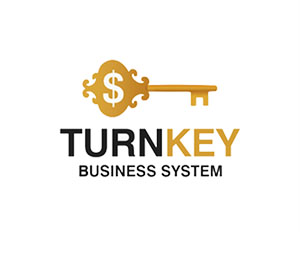Mastering Multi-Account Management: Tips for Success

Mastering Multi-Account Management: Tips for Success
Managing multiple accounts efficiently is a critical skill for traders, brokers, and businesses operating in today’s fast-paced financial markets. Whether you’re overseeing client portfolios, running a prop trading firm, or juggling personal investments, mastering multi-account management can significantly enhance your productivity, profitability, and scalability.
In this article, we’ll explore the challenges of managing multiple accounts, discuss tools and strategies to streamline the process, and provide actionable insights to help you achieve success.
In this article, we’ll explore the challenges of managing multiple accounts, discuss tools and strategies to streamline the process, and provide actionable insights to help you achieve success.

Mastering Multi-Account Management: Tips for Success
What is Multi-Account Management?
Multi-account management (MAM) refers to the practice of overseeing and controlling several accounts simultaneously. These accounts could include trading accounts, client portfolios, or business operations. The goal of MAM is to optimize performance, minimize risks, and ensure seamless execution across all accounts.In the context of financial trading, MAM systems are widely used by professional traders, fund managers, and brokers to manage multiple client accounts from a single interface. This approach allows users to allocate trades, monitor performance, and implement strategies across various accounts with ease.
Why Mastering Multi-Account Management Matters
1. Efficiency and ScalabilityManaging multiple accounts manually is time-consuming and prone to errors. A robust MAM system automates repetitive tasks, enabling users to scale their operations without increasing workload.
2. Enhanced Risk Management
With multiple accounts comes the need for precise risk control. MAM platforms allow users to set stop-loss orders, position limits, and other safeguards to protect capital across all accounts.
3. Consistency in Execution
Professional traders often rely on specific strategies that must be applied uniformly across accounts. MAM ensures consistent execution, reducing discrepancies and improving overall performance.
4. Improved Client Satisfaction
For brokers and fund managers, MAM enhances transparency and trust. Clients appreciate real-time reporting, accurate trade allocation, and personalized service, all of which are facilitated by MAM systems.
5. Competitive Edge
In highly competitive industries like trading and finance, efficiency and precision are key differentiators. Mastering MAM gives you an edge by enabling faster decision-making and better resource allocation.
Challenges of Multi-Account Management
While MAM offers numerous benefits, it also presents several challenges:1. Complexity
Juggling multiple accounts requires advanced organizational skills and technical expertise. Without proper tools, managing diverse portfolios can become overwhelming.
2. Risk of Errors
Manual interventions increase the likelihood of mistakes, such as incorrect trade allocations or missed opportunities. Errors can lead to financial losses and damage reputations.
3. Regulatory Compliance
Financial markets are heavily regulated, and managing multiple accounts must comply with strict legal requirements. Ensuring adherence to rules like KYC (Know Your Customer) and AML (Anti-Money Laundering) adds another layer of complexity.
4. Resource Constraints
Small firms or individual traders may lack the resources to invest in sophisticated MAM systems, limiting their ability to compete with larger players.
5. Balancing Diverse Objectives
Each account may have unique goals, risk tolerances, and preferences. Aligning these objectives while maintaining consistency is a delicate balancing act.
Tools and Technologies for Multi-Account Management
To overcome these challenges, professionals rely on specialized tools and technologies designed for MAM. Here are some of the most popular solutions:1. MetaTrader 4/5 Multi-Terminal
MetaTrader’s MAM capabilities allow brokers and fund managers to execute trades across multiple accounts simultaneously. Features include:
Trade allocation methods (e.g., percentage-based, lot-based).
Real-time monitoring and reporting.
Customizable interfaces for tailored workflows.
2. PAMM Systems
Percentage Allocation Management Modules (PAMM) are widely used in forex trading. They enable money managers to allocate profits and losses proportionally among investors, ensuring fairness and transparency.
3. CRM Platforms
Customer Relationship Management (CRM) systems integrated with MAM tools streamline client communication, onboarding, and performance tracking. Popular options include HubSpot, Salesforce, and specialized financial CRMs.
4. Automated Trading Software
Algorithmic trading platforms like NinjaTrader, cTrader, and TradeStation support MAM functionalities, allowing users to deploy strategies across multiple accounts automatically.
5. Cloud-Based Solutions
Cloud platforms offer flexibility and accessibility, enabling users to manage accounts remotely. Examples include AWS for hosting custom MAM applications or third-party SaaS providers specializing in financial management.
Strategies for Mastering Multi-Account Management
1. Centralize OperationsUse a unified dashboard to monitor all accounts in one place. Centralization reduces clutter, improves visibility, and enhances decision-making.
2. Automate Routine Tasks
Automation minimizes human error and frees up time for strategic activities. Automate tasks like trade execution, reporting, and compliance checks wherever possible.
3. Implement Tiered Access Controls
Not everyone needs access to all accounts. Establish tiered permissions to ensure sensitive information remains secure while empowering team members to perform their roles effectively.
4. Customize Trade Allocation
Tailor trade allocations based on account size, risk tolerance, or client preferences. For example, high-risk accounts might receive smaller allocations than conservative ones.
5. Monitor Performance Metrics
Track key performance indicators (KPIs) such as profit/loss ratios, win rates, drawdowns, and client satisfaction scores. Regular analysis helps identify areas for improvement.
6. Leverage Data Analytics
Use AI-driven analytics to uncover patterns, predict trends, and optimize strategies. Data-driven insights enable smarter decisions and better outcomes.
7. Prioritize Risk Management
Set clear risk parameters for each account and enforce them rigorously. Use tools like stop-loss orders, margin calls, and stress testing to mitigate potential losses.
8. Foster Communication
Maintain open lines of communication with clients, stakeholders, and team members. Transparency builds trust and ensures alignment with shared goals.
Best Practices for Successful Multi-Account Management
1. Start SmallIf you’re new to MAM, begin with a manageable number of accounts. Gradually expand as you gain confidence and experience.
2. Choose the Right Tools
Invest in reliable software that meets your specific needs. Avoid generic solutions that lack essential features for your industry.
3. Stay Compliant
Regularly update your knowledge of regulatory requirements and ensure your processes align with current laws.
4. Focus on Training
Equip yourself and your team with the skills needed to use MAM tools effectively. Continuous learning ensures you stay ahead of technological advancements.
5. Test Before Scaling
Before rolling out changes across all accounts, test them on a small subset to identify potential issues.
The Future of Multi-Account Management
As technology continues to evolve, so too will MAM systems. Emerging trends include:1. AI and Machine Learning
AI-powered MAM platforms will analyze vast datasets to optimize trade allocations, detect anomalies, and predict market movements.
2. Blockchain Integration
Blockchain technology promises enhanced security, transparency, and traceability in financial transactions, making it ideal for MAM applications.
3. Mobile Accessibility
Mobile-friendly MAM solutions will empower users to manage accounts on the go, providing greater flexibility and convenience.
4. Personalization
Future systems will offer hyper-personalized experiences, tailoring strategies and reports to individual preferences and objectives.
5. Cross-Platform Compatibility
Interoperability between different trading platforms and tools will simplify integration and reduce friction in multi-account management.
Conclusion: Achieving Mastery in Multi-Account Management
Mastering multi-account management is no longer optional—it’s a necessity for anyone looking to thrive in modern trading and business environments. By leveraging cutting-edge tools, implementing effective strategies, and staying adaptable to change, you can unlock the full potential of MAM.Whether you’re a seasoned professional or just starting out, focusing on efficiency, risk management, and client satisfaction will set you apart from the competition. With the right mindset and resources, you can transform the complexity of managing multiple accounts into a streamlined, profitable operation.
Remember, success in multi-account management isn’t just about handling volume—it’s about delivering value consistently and sustainably. Embrace innovation, prioritize discipline, and watch your efforts translate into long-term success.









Report
My comments